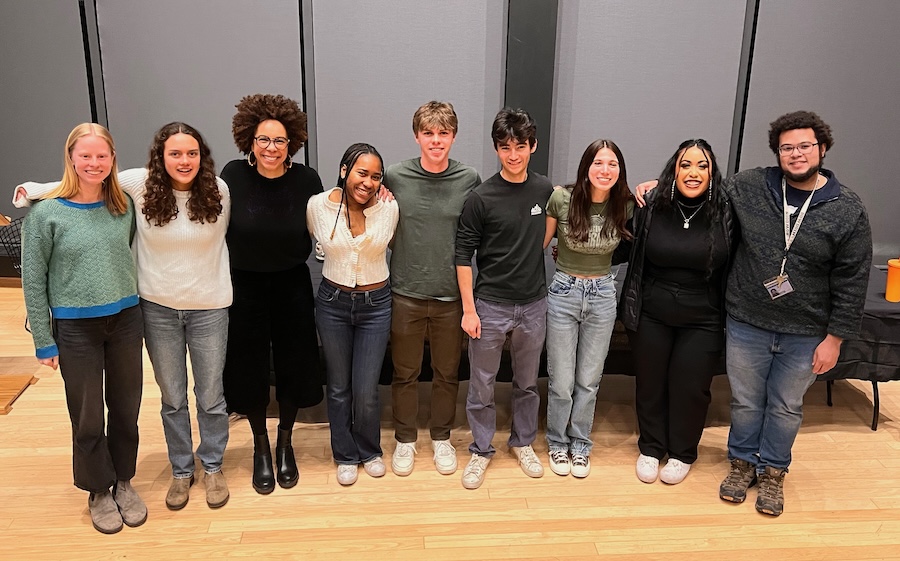Bowdoin Expert Explains Giant Stairs to Rock Enthusiasts
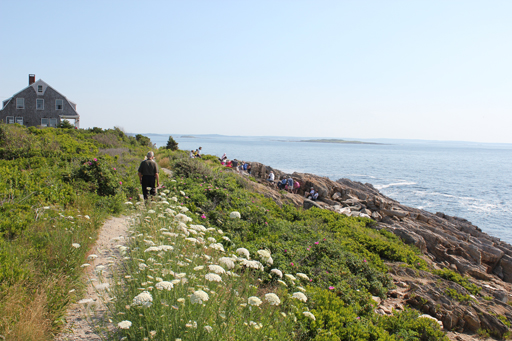
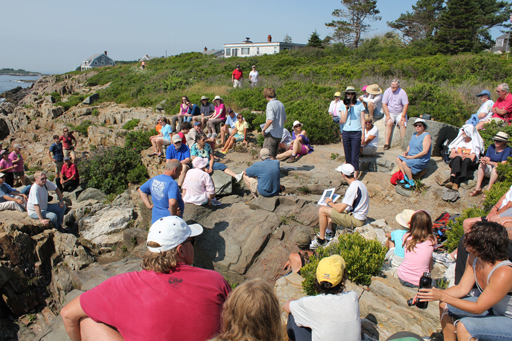
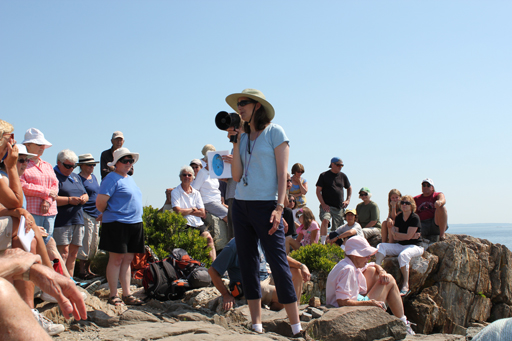
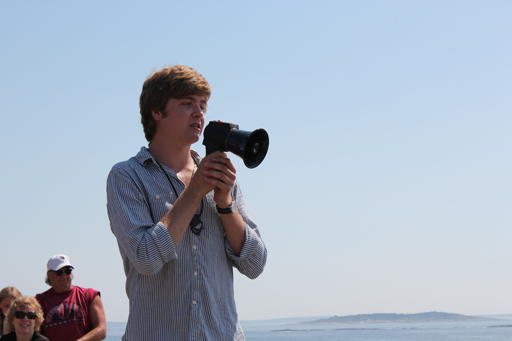
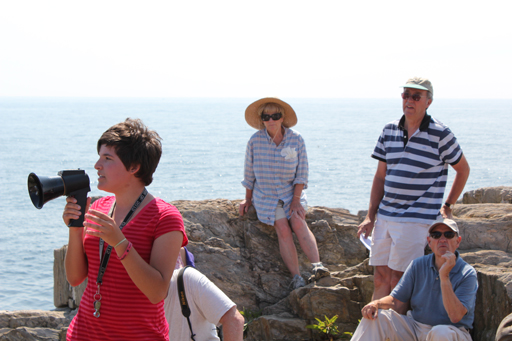
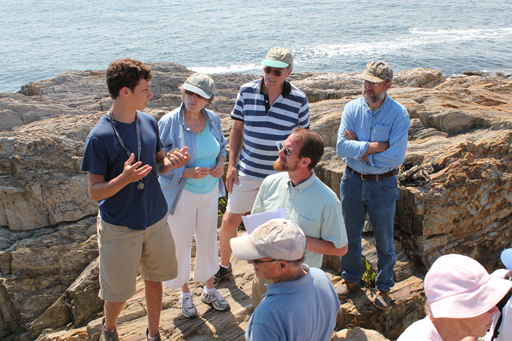
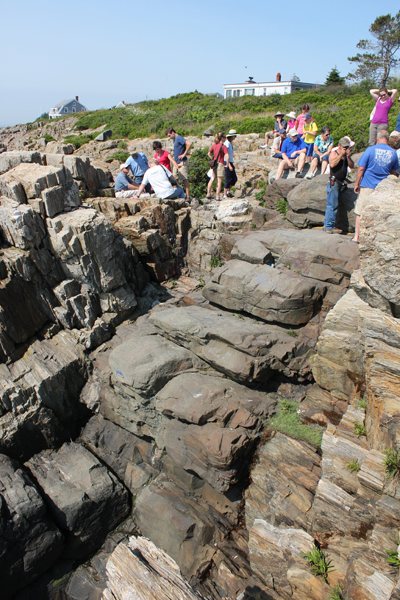
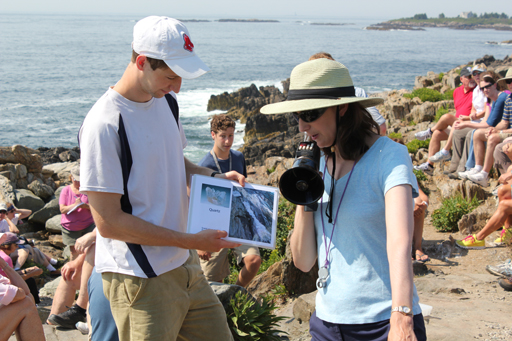
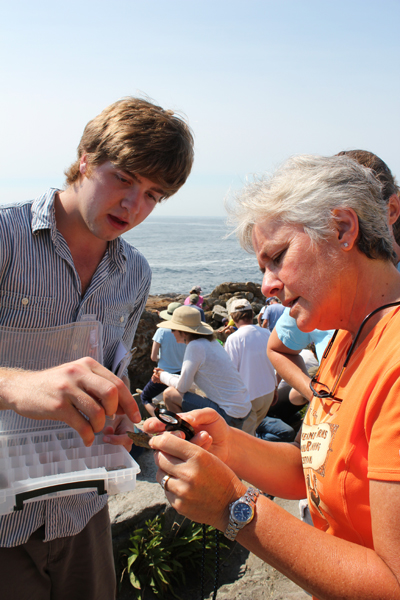
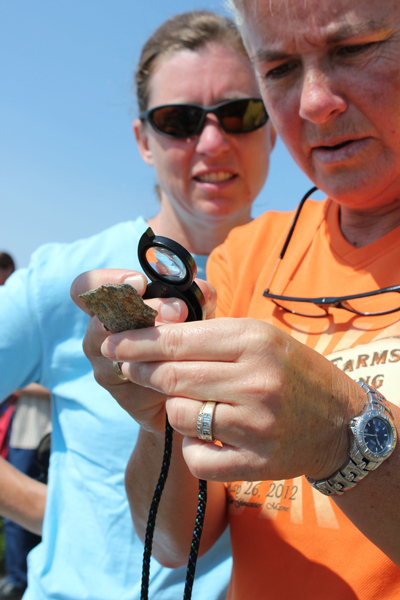
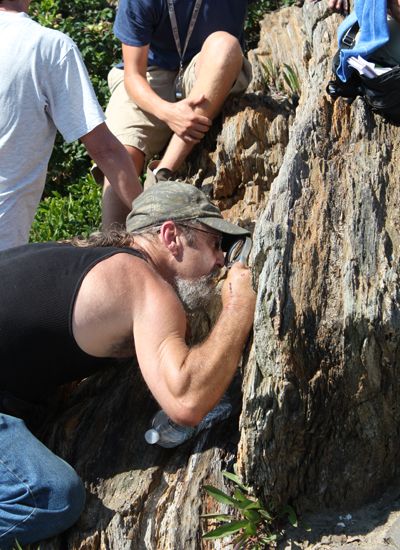
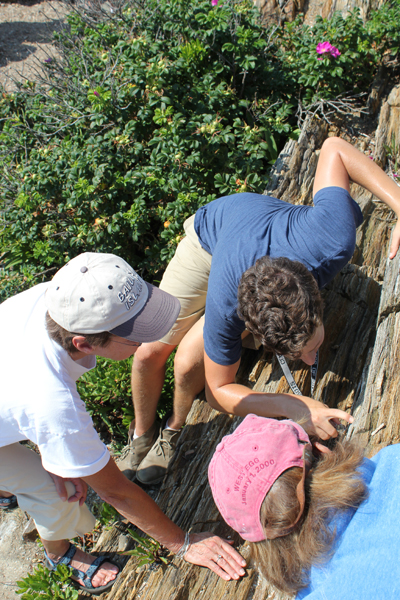
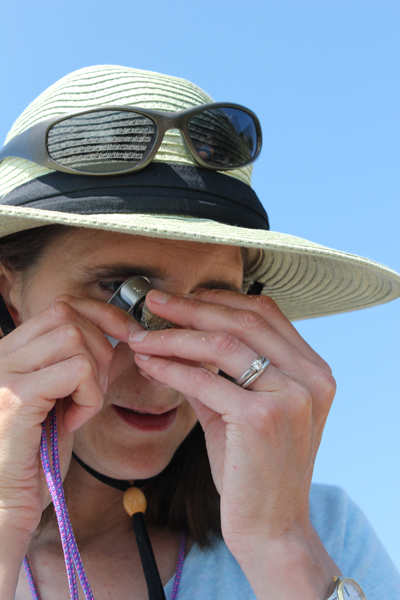
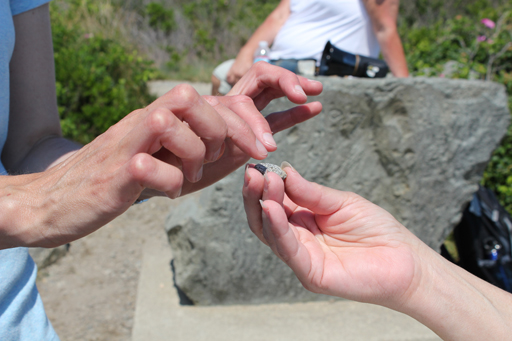
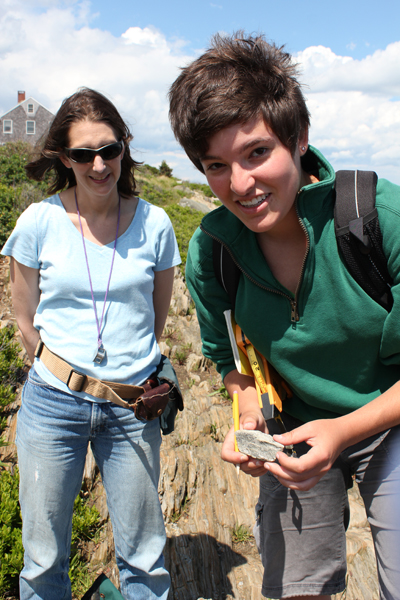
Last week, Professor of Earth & Oceanographic Science Rachel Beane, with help from students, gave a talk on the craggy coast of Bailey Island, inviting the public to come learn about the unusual rock formation there known as the Giant Stairs. About 85 people turned out for the event.
The Giant Stairs are big, black, blocky stones laid on top of each other like a huge staircase that leads into the frothy sea. They’re an anomaly among the flaky, streaky, rust-gray metamorphic rock around them.
Once people had gingerly placed themselves on the uneven rocks to get comfortable, Beane held up a bullhorn to project her voice over the crashing waves. She told the crowd they were sitting on hundreds of millions of years of history. “My four-year-old daughter asked me why I loved rocks so much,” she said. “I love reading them. I love reading the minerals. I try to figure out what the story is; what the rocks are telling me.”
Beane first listed the minerals in the rocks and encouraged people to locate garnets, staurolites, mica and quartz around them. She then gave a condensed version of the area’s long history: 400 to 500 million years ago, this part of the world was made up of layers of mud and other sediments, forming the shores of an ancient ocean.
Then, approximately 300 million years ago, the ocean closed and the continents came together to form Pangaea, the supercontinent. The layers of mud and sediments were buried and, subject to high pressure and heat, metamorphosed into schist. Minerals crystallized into such stones as garnet and quartz. Further, pressure from colliding tectonic plates caused the sedimentary layers to buckle and fold. Over time, weathering and erosion exposed the schist, allowing people to precariously perch themselves on these rocks today.
As for the Giant Stairs, Beane said they have a different, albeit intersecting, story. “[The step formation] doesn’t follow the foliation of these rocks,” Beane explained, pointing to the majority of rock around her. “It went counter to the layers of metamorphic rock. So to a geologist, this suggests that this rock came after these rocks.”
When Pangaea began to break apart 200 million years ago, separating tectonic plates made cracks and fissures in the hard rock into which molten materials flowed. On what eventually became Bailey’s island, a vertical crack opened up in the older metamorphic rock, deep within the earth, and molten material was injected into it, hardening into basalt and forming a dike, or what is known today as the Giant Stairs.
As the basalt solidified and as erosion removed the outer layers, regular fractures called joints formed. These joints, combined with nature’s weathering, worked the rock into its distinctive pattern of a rough staircase. “If I was a giant, I could walk right on down these steps,” Beane joked.
Student Research
This summer Beane is advising the research projects of Graham Edwards ’14 and Rachel “Hanni” Haynes ’15, who have fellowships from Bowdoin (a Freedman Fellowship in Coastal and Environmental Studies, and a Rusack Coastal Studies Fellowship, respectively) to conduct research into the area around the Giant Stairs. Both students also contributed to Beane’s lecture.
Haynes is researching the layers of green-colored rocks that lie within the metamorphic rock around the Giant Stairs. Specifically, she’s looking for evidence for past volcanic and tectonic activity, such as faulting. These variations “will give us clues to the metamorphic formation and to understand the smaller events that might have taken place,” she said. The rising sophomore said she, liked Edwards, was also inspired to do more geological research after taking Beane’s 101 class, “Investigating Earth.” “I wanted to come back and explore more for myself,” she said.
Edwards is investigating mineral lenses, such as quartz and pink garnet, which are embedded within the metamorphic rock. He’s attempting to figure out “why they’re here, where they came from, and to use them as a tool to determine the conditions of metamorphosis” of the rock. He said his curiosity was piqued about the area after he took a 101 Earth and Oceanographic Science class with Beane in the fall of 2011. “For me, I just wanted to keep going deeper and to find out more,” he said.
Beane said the research of both her students will help fill out the holes in the story of the Giant Stairs and surrounding rock. “We understand the big picture,” she said, “but there’s a lot more that happened,” which can only be revealed by studying the geological details recorded in the rocks.



